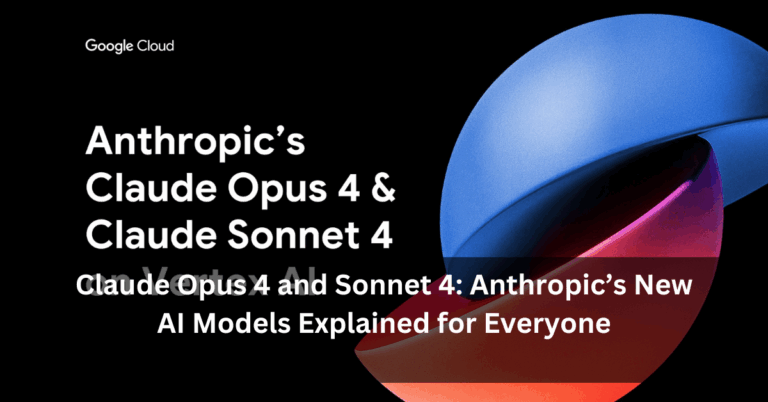Google’s SynthID Detector: A Simple Tool to Spot AI-Made Content
In 2025, it’s getting harder to tell whether a picture, video, or even a piece of text is made by a person or by a computer. With so many AI tools around, even a trained eye can be fooled. That’s why Google has created a new tool — SynthID Detector — to help people find out whether something was made using AI.
This new tool is meant to give people more clarity, especially now that content on the internet is changing quickly. On Blogs, we’ll break it down for you in simple terms.
What Is a SynthID Detector?
SynthID Detector is a tool developed by Google DeepMind, a branch of Google that works on smart computer systems. This tool checks digital content — like images, text, audio, or video — and tells you whether it was created by Google’s AI models. These models include Gemini (text), Imagen (images), Lyria (music), and Veo (videos).
What makes SynthID special is that it doesn’t just “guess” whether something is AI-made. Instead, Google adds a hidden watermark to AI content at the time of creation. This watermark isn’t visible to our eyes. But SynthID can detect it easily.
You can stay updated on such tech stories right here on Blogs.
How Does SynthID Work?
Using the SynthID Detector is quite simple:
1. Upload Your File
Whether it’s an image, an audio clip, or a video — you upload your file on the SynthID portal.
2. Tool Scans for Watermarks
SynthID checks if there is a special invisible watermark added to the content. This watermark is unique to content made by Google AI tools.
3. AI-Made Parts Are Highlighted
If SynthID finds the watermark, it marks that piece of content as created by AI. It can even show which parts of the image or video are AI-generated.
This means people who use content from the internet — students, teachers, journalists, designers — can now verify where it’s coming from. And that makes a big difference.
You can always read more tech updates on Blogs.
Why Is This Tool Needed?
These days, almost anyone can create content using AI. It’s fast, free in many cases, and easy. But this comes with some serious concerns too. For example:
- Fake news can be created using AI images or audio that sounds like a real person.
- Students and researchers may use AI-made text without knowing it’s not real.
- Social media can be filled with fake videos and posts.
Google wants to make sure that people know what they are looking at or listening to. SynthID helps by pointing out the source. It’s not perfect yet, but it’s a big step in the right direction.
To follow more tech tools and updates like this, don’t forget to check out Blogs.
Who Can Use SynthID?
Right now, Google is allowing only a few people to try the SynthID Detector. These are usually researchers and media professionals. But Google has said that it will be available for more people in the coming months.
If you’re someone who regularly works with online content — like digital creators or school teachers — this tool will be useful for you in the near future.
And when it’s out for everyone, we at Blogs will be the first to give you a simple guide on how to use it.
What Types of Content Can It Detect?
Google has designed SynthID to work across different formats. Here’s what it currently supports:
- Images created with tools like Google’s Imagen
- Videos made using the upcoming Veo model
- Music or audio created through Lyria
- Text generated by Gemini models
For example, let’s say someone sends you an image and says it’s a real photo from a news event. You can upload it to SynthID, and it will tell you if that photo was actually generated by AI.
This helps in avoiding misinformation and staying informed with facts.
What Makes SynthID Different?
There are many AI detection tools out there, but most of them work like guesswork. They try to predict if something looks “too perfect” or “too machine-like.” But SynthID doesn’t guess. It reads the digital watermark — a hidden signal that AI tools from Google embed in their content.
This makes SynthID much more accurate than many other free tools on the internet.
And yes, this isn’t just for experts. When made available to everyone, anyone with basic internet knowledge can use it easily.
You’ll always find step-by-step instructions and guides on Blogs, explained in simple language.
Final Words
In a time where digital content is everywhere and not everything is what it seems, Google’s SynthID Detector is a big help. It allows people to check where the content is coming from — whether it’s human-made or computer-made.
While it’s still in testing and not yet available to all, it shows how serious companies are about keeping the internet trustworthy.
To get future updates on SynthID and other easy-to-understand tech news, keep visiting Blogs. We explain things simply, so you don’t have to struggle with complex tech words.
Stay informed. Stay smart. All with Blogs.







